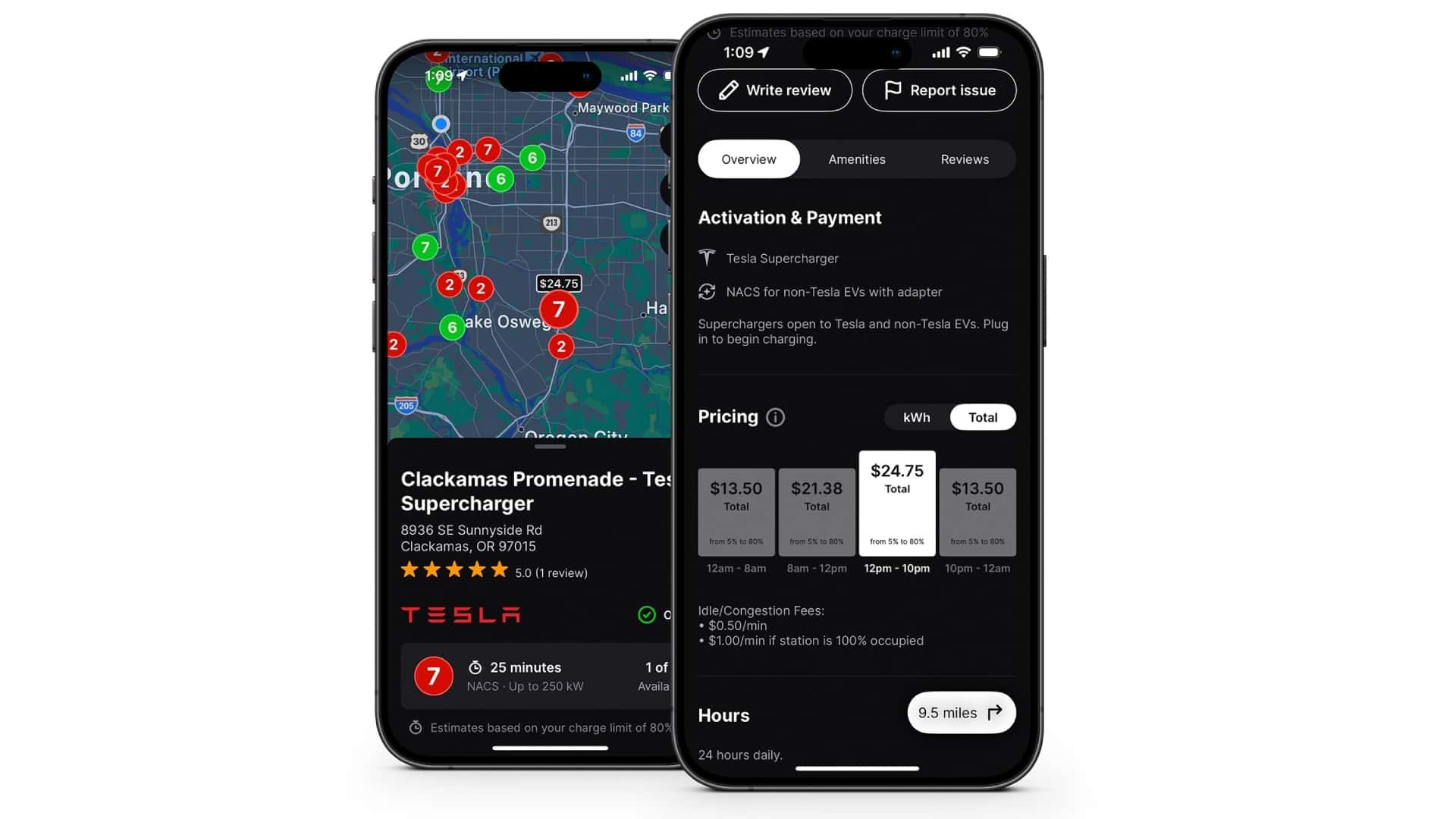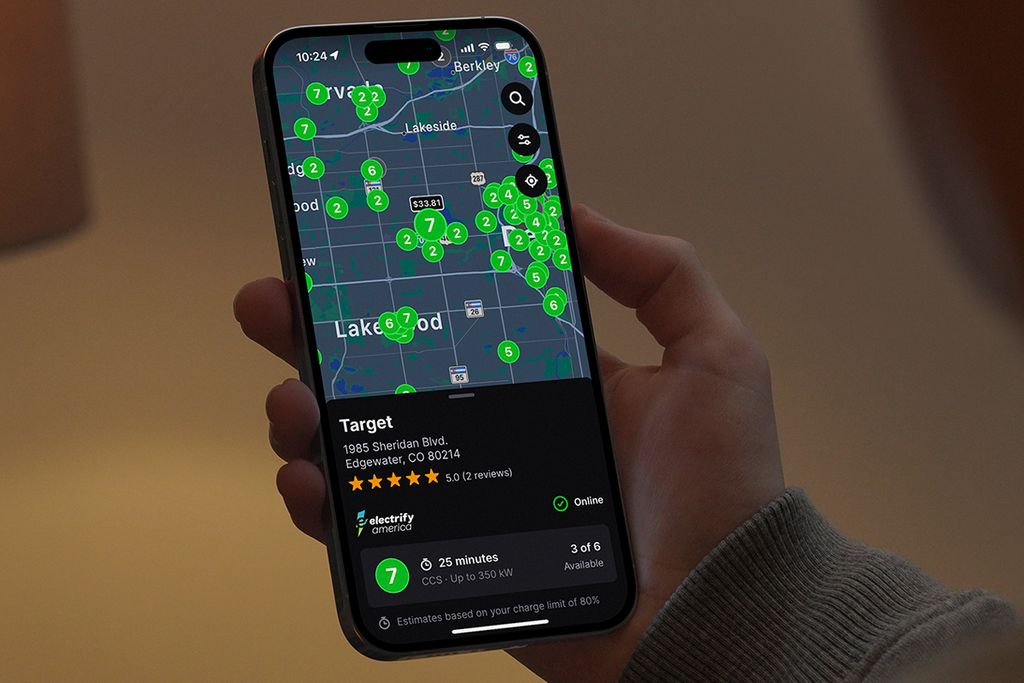
- The smartphone app Chargeway just added real-time pricing for public EV chargers.
- The app also breaks charging speeds down to a 1 to 7 scale that's easier to understand than kilowatt-hour speeds.
- The app aims to answer common questions: "Can I connect my car here? How long will charging take? How many chargers are available? How much will my charge session cost?"
In the third quarter of this year, 440,000 Americans bought a new electric vehicle—many for the first time ever. That means almost half a million people now get the joy of learning about kilowatt-hours, kilowatts, the difference between CCS and North American Charging Standard (NACS) plugs, and charging curves.
That last one isn't the only curve involved with owning an EV. There's also the learning curve. While those terms above are a part of everyday life for many EV veterans, early adopters or industry pros, they can often be esoteric and confusing to new drivers coming from the gas-car world—especially ordinary folks who probably haven't thought much about how their cars work beyond the occasional oil change. And the litany of charging apps, or even in-car route-planners, isn't always helpful for demystifying the electric world.
The app Chargeway aims to do this better. The Oregon-based company breaks down your EV's plug type into three colors: green for CCS, red for Tesla NACS and blue for the increasingly irrelevant CHAdeMO. More crucially, it breaks your car's potential charging speeds down to an easily-understood 1 to 7 scale, with 7 being the fastest. The higher the number, the faster the charge, the company says.

My Kia EV6 rates a 7, which is a heck of a lot easier to explain than telling an EV newcomer that it can do 233-235 kilowatts under optimal conditions on a 350-kW fast-charger.
As of this week, the app gets even better. It just added real-time pricing for all of North America, so now, you can easily see how much you'll pay at the "pump." Chargeway now lists daily price-per-kilowatt-hour rates, as well as variable pricing that may change throughout the day. Not bad for a free app. But those who pay $5.99 per month also get prices listed directly on the charging station map, plus cost estimates.
Like most EV owners, I charge at home, so I only use DC fast-charging when I'm on road trips, extended drives, off the beaten path somewhere or I'm testing a car for InsideEVs. (The latter is a me-specific use case, obviously.)
But now, I can see that an Acura dealer on my way to New York City charges 79 cents per kilowatt-hour of electricity—what you might consider an EV's cost for a gallon of gas, I suppose—while a nearby Tesla Supercharger does it for 50 cents per kWh. I'd need a Tesla adapter, potentially, but I would save money on the latter.
“Now with one tap on the Chargeway station map, drivers can easily see what we in the industry know the public must learn: Can I connect my car here? How long will charging take? How many chargers are available? How much will my charge session cost?" the company's founder and CEO, Matt Teske, said in a news release. "With our latest update, Chargeway users can now see ‘electric fuel pricing’ for thousands of stations at a glance.”
While the last thing any EV owner wants is more smartphone apps, this one probably deserves a download in the Apple App Store or on Google Play. Ultimately, EV charging has to be made simpler and easier to understand for more people to break up with gasoline—especially everyday drivers who don't have the time, energy or inclination to learn the nuances of kilowatt-hour speeds.
EV charging just has to work, and the first time out, with transparent pricing. This seems like a good step in that direction.
Contact the author: patrick.george@insideevs.com








